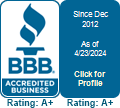
When you think of company culture, you might picture corporate employees sitting on bean bags surrounded by foosball tables and snacks. But culture is an ever-present and critical component of any company, and it affects every aspect of how a business succeeds.
For instance, a company’s ability to hire and retain talented and motivated individuals is significantly impacted by its culture. In fact, research shows that 32% of prospective employees would take a 10% decrease in pay to work for a company with a more appealing culture.
But what exactly defines a company’s culture and how can you create one that has job seekers flocking to your brand?
Defining a Culture
In an academic sense, a culture describes the rules, shared beliefs, and common practices of any given community. Cultures exist for many types of groups, including a race, religion, hobby, or company.
The overall culture of a business can be hard to define, as each employee’s perception of the workplace may differ significantly from the group. All in all, corporate culture is primarily made up of elements such as:
- Demonstrated values of the leadership team
- Relationship between coworkers
- Expected patterns of behavior and conduct
- Social atmosphere
While each company tends to have an overall culture that permeates throughout, each department may have its own subculture. When it comes to running a business, your role within the larger network will determine your impact on the overall culture.
If you are the CEO of a company, you will have a greater impact on the brand culture than a mid-level manager would. But, as a mid-level manager, you would have a direct influence on your team’s culture—an impact that the CEO might not have.
Company culture can also have a significant impact on employee motivation. The key to understanding this rests in comprehending why people want to go to work at all. Generally, there are six primary factors that would prompt an individual to work.
Positive Motives
- Play- when you realize self-fulfillment in engaging in the work itself
- Purpose- when the outcome of the work seems to be in line with your identity as a person
- Potential- when the outcome of work helps your identity by enhancing your potential
Negative Motives
- Emotional Pressure- working because you are afraid some external force poses a threat to your identity
- Economic Pressure- when some external forces compel you to work in order to achieve a certain reward
- Inertia- when you are confused by the lack of motivation in your work and personal identity
Company culture addresses all the six different factors that affect employee’s motivation to work. A culture that is committed to inspiring purpose, play and potential while suppressing economic pressure, emotional pressure and inertia is a winning formula that will result in higher employee performance and better customer service. This is true across all sectors of the job industry.
Evaluating Your Company Culture

Before you can create a company culture, you must know where you stand. Here are some questions that you can use to evaluate your current company values:
- Do people take time off work? Is using vacation time frowned upon?
- How do people talk to each other? Is there open communication or does it happen behind closed doors?
- How do employees talk about one another? Do they backbite? Do they speak highly of each other?
- Where is most of the time spent? In meetings? In individual workspaces?
- Do employees voice concerns or offer feedback to management?
- What are considered the most important tasks?
- Do employees know each other well? Is sharing personal information common?
- How do employees (and leaders) react to stressful situations?
As you answer these questions, you will begin noticing patterns of behavior, expectations, and unspoken rules that will shed light on your company’s culture.
What if you are still not sure? You can conduct a culture audit by performing the following tasks:
- Look at your marketing materials: What company traits do you promote to others? Your marketing materials will identify what you think differentiates you from others – and that can reveal your company culture.
- Review your mission statement: What types of words do you use in your mission statement? Are you aspirational, visionary, competitive? Your mission statement reveals what you value as a company, and that informs your culture.
- Survey your employees: What do your employees think about your company culture? Sometimes the easiest way to get answers is to go to the source – your workforce.
After this audit, you should have a much better understanding of where your company and its employees stand with respect to culture. You will find most companies fall under one of four cultural umbrellas, each of which can be improved upon.
Four Common Company Culture Types, and How to Improve Them
The Organizational Culture Assessment Instrument (OCAI) has four company culture categories: create, collaborate, control and compete. These company culture types are based on two criteria: Whether the company is more internally or externally oriented, and whether the company is more flexible or more stable in responding to change.
Companies that are more internally focused have high levels of collaboration, creativity and communication, while companies that are externally focused have strong sales and marketing, customer service and competitive focus. Of course, both internal and external focus is necessary for any business to succeed. But the focus your organization leans toward says a lot about your company culture type.
Creative Culture

Also called adhocracy culture because of its “ad hoc,” flexible nature, this type of company culture is resourceful, agile and innovative. Employees are encouraged to take risks, propose new ideas and even fail occasionally, as long as a lesson is learned. Leaders are inspirational visionaries who value freedom of thought and handle change and uncertainty well. In fact, change is the goal of creative cultures: bringing a new product or idea to market is the ultimate success. The best example of creative cultures are businesses in the tech industry, like Facebook and Google.
To promote a creative culture, employee recognition should focus on rewarding innovation, risk-taking and imagination. Art glass awards or customizable crystal awards will add that personal touch that creative cultures crave. For activities, set up a “Wall of Fame” where recognition is posted, or give out experiential rewards, like theme park tickets or music lessons.
Collaborative Culture
Collaborative company culture types feel like “family.” Sometimes called clan culture, they’re all about tradition, loyalty and recognizing teamwork. Employees’ commitment and engagement is highly valued, and they’re encouraged to develop their skills and contribute to many different parts of the organization. Leaders are considered mentors and work on building consensus, rather than dictating plans. The best examples of collaborative culture occur at nonprofit organizations and in the education and healthcare industries.
Companies can use recognition awards that reward teamwork and years of service (which promote loyalty, a highly valued trait) to encourage a collaborative culture. Use activities like team outings and compliment boxes, where the team can drop kudos for each other to keep the collaborative culture strong.
Control Culture
 Control cultures are the traditional “top-down” business model, also called the hierarchy culture. These types of organizations are very structured, and they value processes, logic and structure. Employees are expected to follow the rules, make decisions carefully and pay attention to detail. Leaders focus on coordinating the team and improving efficiency and reliability. This type of company culture is often seen in government and military as well as industries where safety is required, like nuclear power or aviation.
Control cultures are the traditional “top-down” business model, also called the hierarchy culture. These types of organizations are very structured, and they value processes, logic and structure. Employees are expected to follow the rules, make decisions carefully and pay attention to detail. Leaders focus on coordinating the team and improving efficiency and reliability. This type of company culture is often seen in government and military as well as industries where safety is required, like nuclear power or aviation.
Awards for leadership and safety promote the qualities that matter to control cultures. Achievement trophies come in a variety of shapes and sizes to fit any occasion. Reward programs work well in control cultures, too: Give on-the-spot recognition by handing out points or tokens for accomplishments, then let employees trade them in for company swag or prizes.
Compete Culture
Compete cultures, also called market cultures, got their name because they are competitive and results-driven. Employees are encouraged to make as much profit as possible, capture market share and beat other businesses in their field. Leaders are demanding and directive with high expectations. You might think these organizations need to learn how to improve company culture, but this culture type can actually work for the sales and marketing, consulting and finance industries.
To promote a culture of personal excellence, give awards like sales trophies and employee of the month plaques. Outside of awards, employees in complete cultures appreciate recognition like personal shout-outs in front of the company. You can also hold tournaments and themed competitions, like pumpkin carving or holiday baking, to encourage friendly competition.
Establishing a New Company Culture

When most people think about building a company culture, they automatically think of basic ideas including décor, free stuff, and social events. While these elements do impact the overall work environment, there are much more impactful ways to create a positive and motivating culture.
As the saying goes, “be the change you want to see in the world.” When it comes to establishing a new culture, leader behavior is the most effective tool you have. Employees tend to mirror the behavior of their superiors.
This is how leaders can either directly or indirectly create a new culture. Here are two examples that will demonstrate how this works:
Robert is a mid-level manager at a software development company who has a team of 15 employees. As an employee, Robert always wants to go the extra mile. He often stays late to work on projects, extending his workday to 10 hours or more on a regular basis. Seeing Robert stay late makes employees feel obligated to the same, and the culture of the team grows into an expectation that workdays last longer than the original 7-8 hours.
Looking at this example, it is clear Robert had no intention of establishing this culture of working longer. He simply was working in a way that made him happy, but his behavior set the tone for the rest of the team. This is an example of how leaders indirectly influence company culture through unspoken communication such as habits and patterns of behavior/communication.
Now consider the same scenario in a different way:
Robert is a mid-level manager at a software development company who has a team of 15 employees. As an employee, Robert enjoys putting in extra work but does not want his employees to feel obligated to do the same. While he often stays late to work on projects, Robert messages his team at the same time every day and thanks them for their work. He tells them to “have a great evening,” and encourages them to leave on time. Over time, Robert’s leadership behavior builds a culture of gratitude and boundary-setting. While he demonstrates that it is okay to work late, he emphasizes that it is not a requirement.
This is an example of how leaders directly influence company culture through their spoken values and expectations.
Communicating Company Culture to Employees

When it comes to building a strong company culture, intention matters. You cannot assume that your employees have the same values as you. By clearly defining expectations and implementing structured patterns of behavior, you make it easy for employees to navigate the work environment.
If you leave your company culture to employee interpretation, you may find that the perception of your values does not match the environment you want to create. As you set clear expectations surrounding employee behavior, you will find it easier to create a fairer work environment.
When the culture is obvious and defined, employees have a reference point to decide if they are in the right company. This also saves time and money while onboarding. Almost a third of the employees who leave a job in their first 90 days do so because of the company culture.
If your organization’s culture is strong, you can communicate important values and expectations upfront. This will help prospective candidates decide if the job is right for them. Once they start working and see that the culture is what you told them it would be, you may see less turnover in those crucial first few months.
Receiving Feedback on Company Culture From Employees

If you are like many business professionals, you are interested in hearing honest feedback from your employees. You know that their true thoughts and feelings about their work, fellow workers, and the company as a whole can have a big impact on productivity.
No doubt you would like to improve the type of feedback you receive from your employees. With everything else on your plate, though, you may wonder where to start. Here are four easy tasks you can do right away to help:
- Establish an open door policy. It is crucial to convey to your employees that they are always welcome to provide feedback. Let them know that even if you seem busy, they should feel free to inquire at any time whether they could have a few minutes to speak with you. Make it clear that this is especially true if they have feedback of an urgent nature or that you may not want to hear, as the feedback that is hardest to deliver is often the most needed.
- Listen with your heart. Try to look beyond the actual words. Discern the feelings behind what an employee is telling you. Use open-ended questions, such as: "What happened next? How did that make you feel at the time? How do you feel about it now, after the fact?" When you listen with empathy, your employees will feel safe and will be more likely to provide additional honest feedback in the future.
- Follow up on feedback received. While it is crucial to genuinely listen, it is just as important to take action on anything that needs to be addressed. Let your employees know that their concerns matter to you. Assure them that you will look into any issues they report and will take appropriate action. Then keep your word and follow through. Doing so speaks volumes, sending the message that you truly want to receive their feedback.
- Take the initiative to solicit feedback. Do not wait for problems to find you. Actively seek feedback by asking for it. If you have already taken the steps listed above, your employees will likely know that you are sincere when you ask for further feedback. You might even consider scheduling a time each week or month to meet with them, letting them know that this time is dedicated to hearing from them.
After defining, evaluating, and establishing your company culture, it is important to consistently repeat the process and gauge reception. Over time, new patterns and expected behaviors develop. This is especially true during times of stress. By continually reassessing the values and actions that shape your company culture, you will ensure that it never strays too far from your original mission.


